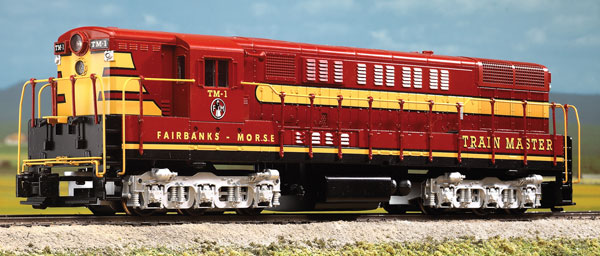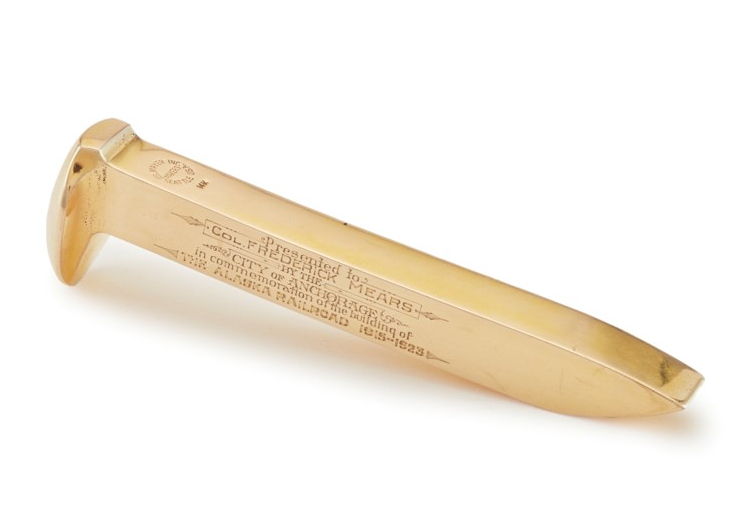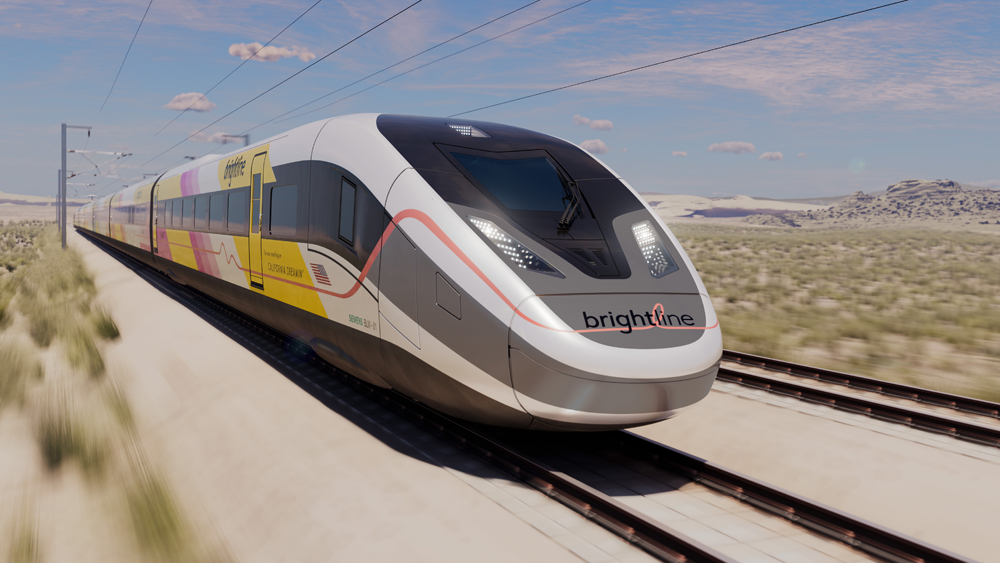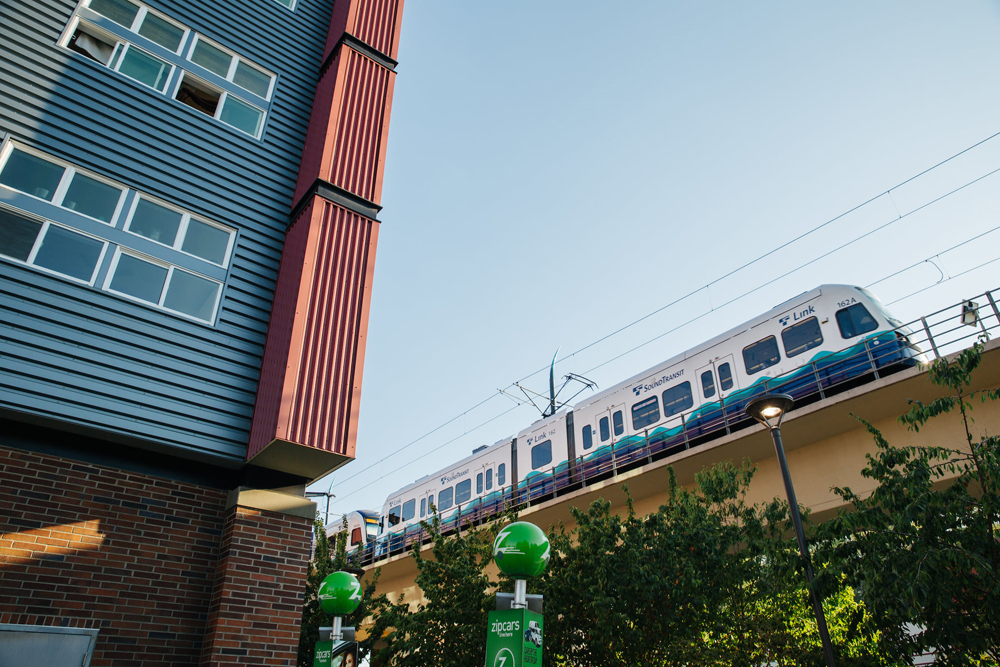Surprisingly, it took almost half a century for S gauge to catch up to its O gauge brother in the locomotive sweepstakes. Lionel introduced its O gauge model of a Train Master in 1954, when real-life Train Masters still traveled the rails. In the years since, Williams, MTH, and now K-Line have cataloged their own versions.
At last, American Models of South Lyon, Mich., has perhaps fulfilled A.C. Gilbert’s dreams by creating a 1:64 scale Train Master.
The prototype
Fairbanks-Morse, wrote J. David Ingles in the August 1973 issue of Trains magazine, knew it had something special when it introduced the Train Master in 1953.
At the time, most diesels offered between 1,500 and 1,800 horsepower. The Train Master raised the ante to 2,400 horsepower. Fairbanks-Morse designated the locomotive as H-24-66, with the first digits signifying the horsepower rating and the second the number of traction motors and axles (six each).
The Train Master’s opposed-piston diesel engine (derived from Fairbanks-Morse’s marine engines) necessitated a tall hood (the “H” in its designation). Designers had no choice but to give the locomotive a boxy shape with blunt vertical ends.
The locomotive’s appearance and size (66 feet long, 10 feet, 4.5 inches wide, and 15 feet high) actually worked to its advantage. Those features combined with its name to win favorable publicity for the 187.5-ton behemoth.
So did the tours that four demonstrator units took in 1953. With all the excitement, Lionel rushed to develop an O gauge model to take a step ahead of American Flyer’s still-new Geep, and it debuted less than a year later.
In the meantime, railroads were sending orders to Fairbanks-Morse’s Beloit, Wis., plant. Or not sending them. The Train Master put on a big show but didn’t generate big orders. Only 127 units were sold to railroads in the United States and Canada.
Train Masters were used in freight and passenger service, with some of them surviving well into the 1970s on the Norfolk & Western and the Southern Pacific. Only one, owned by the Canadian Pacific, exists today.
The model
American Models’ Train Master is available in six road names with superb paint schemes with two different numbers each: Chicago & North Western (which actually rostered only a smaller, less powerful model from Fairbanks-Morse nicknamed the “Baby” Train Master), Lackawanna, Pennsylvania, Reading, Southern Pacific, and Virginian. A seventh paint scheme that immediately caught my eye (and has me ready to jump into S gauge) is the stunner shown here, the Fairbanks-Morse demonstrator colors.
The barn red paint scheme, with yellow highlights, black details, and silver trucks, can’t help but impress. American Models also offers the demonstrator in two road numbers (TM-1 and TM-2), so you can run a pair of units together. Single or paired, this locomotive looks great pulling postwar American Flyer rolling stock as well as the latest S gauge cars from American Models, Lionel, and S-Helper Service.
The manufacturer got everything right on the shell – perfect colors and tons of details, notably wire grab irons and brass stanchions. Also featured are five free-turning fans and see-through fan grills, plus LED (light-emitting diode) directional headlights. The only missing touch is the lack of an engineer figure in the cab.
Was American Models as thorough under the hood? Yes.
This die-cast metal model runs like a charm. It features an all-new drive system with sprung “Gription” wheelsets that include traction tires. Also impressive is the five-pole can-style motor with a large flywheel.
The Train Master operates smoothly and reliably on 20-inch-radius S gauge track. Regardless of whether your tastes lean toward a postwar American Flyer layout or a hi-rail pike, this big diesel will look right at home.
American Models offers the Train Master in a Flyer-compatible AC-powered version and a scale DC-powered version.
On the test track
American Models’ Train Master easily mastered our performance tests.
Given 5.8 volts, the minimum amount to get under way, the locomotive crept along at 19.1 scale mph. From this low end of the range it accelerated to 91.9 scale mph at 15 volts. That’s clipping along at about 10 scale mph more than the prototype could muster.
So you know this bruiser can move … but is it a good puller? Definitely! The Train Master weighs 2 pounds, 3 ounces and has a drawbar pull of 1 pound, 3 ounces. That’s equivalent to 99 pieces of rolling stock on straight and level track, which should be more than enough to create one long S gauge train.
Unlike so many O gauge locomotives made today, the S gauge Train Master doesn’t have a sound system. But as it glided along our test layout, I did hear a constant low-pitched whine from the drive system. Also, the directional lighting in our sample didn’t always follow the direction of travel. Still, the overall performance of our sample was more than satisfactory. It was also just plain fun to run.
Whether you’ll run freight cars or streamlined coaches behind your Train Master, this new locomotive from American Models will find a home on any roster.














